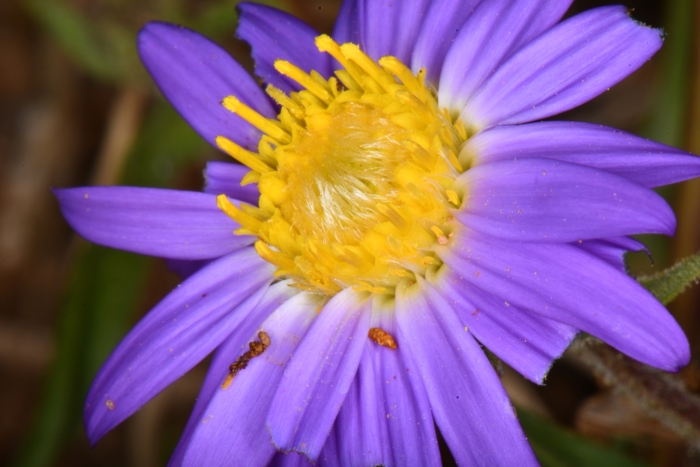Western Mountain Aster
(Symphyotrichum spathulatum)
Western Mountain Aster (Symphyotrichum spathulatum)
/
/

© Darrin Gobble
CC BY 4.0
Image By:
© Darrin Gobble
Recorded By:
Copyright:
CC BY 4.0
Copyright Notice:
Photo by: © Darrin Gobble | License Type: CC BY 4.0 | License URL: http://creativecommons.org/licenses/by/4.0/ | Uploader: dee_gobbs | Publisher: iNaturalist |

























Estimated Native Range
Summary
Symphyotrichum spathulatum, commonly known as western mountain aster, is a perennial herb native to montane meadows, open aspen groves, and coniferous forest clearings in western North America, including the Sierra Nevada and Rocky Mountains, as well as northwestern Mexico. It typically grows to a height of 8-31 inches (20-79 cm) and is characterized by its violet ray florets and bright yellow disk florets that bloom from July to August, offering a showy display of color in the summer landscape. Western mountain aster thrives at elevations between 3937-9514 feet (1200-2900 meters), where it forms extensive colonies through its long rhizomes.
This plant is valued for its ability to adapt to a range of mountainous habitats and for its attractive flowers that are highly appealing to pollinators such as bees and butterflies. It is often used in native plant gardens, restoration projects, and as a border plant in cultivated gardens. Western mountain aster prefers well-drained soils, moderate watering, and can tolerate both full sun and partial shade conditions. While generally low-maintenance, it can be susceptible to powdery mildew in humid conditions. Gardeners should be aware that its rhizomatic growth can lead to spreading, which may require management in smaller garden spaces.CC BY-SA 4.0
This plant is valued for its ability to adapt to a range of mountainous habitats and for its attractive flowers that are highly appealing to pollinators such as bees and butterflies. It is often used in native plant gardens, restoration projects, and as a border plant in cultivated gardens. Western mountain aster prefers well-drained soils, moderate watering, and can tolerate both full sun and partial shade conditions. While generally low-maintenance, it can be susceptible to powdery mildew in humid conditions. Gardeners should be aware that its rhizomatic growth can lead to spreading, which may require management in smaller garden spaces.CC BY-SA 4.0
Plant Description
- Plant Type: Herb
- Height: 2-3 feet
- Width: 1-2 feet
- Growth Rate: Moderate
- Flower Color: Purple
- Flowering Season: Summer
- Leaf Retention: Deciduous
Growth Requirements
- Sun: Full Sun, Part Shade
- Water: Medium
- Drainage: Medium
Common Uses
Bee Garden, Butterfly Garden, Low Maintenance, Street Planting, Water Garden
Natural Habitat
Montane meadows, open aspen groves, and coniferous forest clearings in western North America and northwestern Mexico
Other Names
Common Names: Western Aster, Pacific Aster, Coast Aster
Scientific Names: , Symphyotrichum spathulatum, Aster adscendens var. delectabilis, Aster adscendens var. fremontii, Aster aestivus, Aster aestivus var. aestivus, Aster ascendens var. delectabilis, Aster ascendens var. fremontii, Aster delectabilis, Aster fremontii
GBIF Accepted Name: